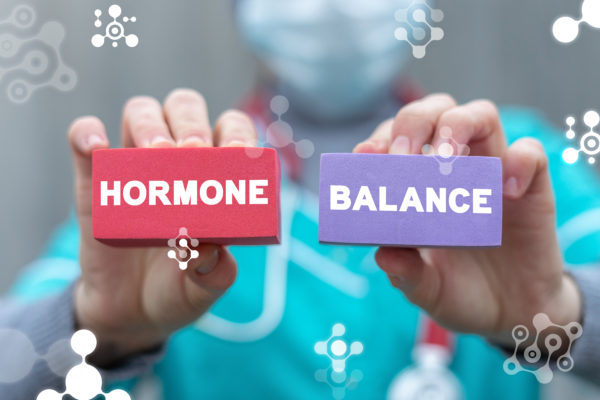Low testosterone(Low-T) levels can affect men at any point. Research suggests that this condition occurs in 2 out of 100 men and can come as part of the aging process or due to a medical condition.
If you are feeling sluggish and more tired than usual, then you might have low testosterone. Other symptoms include low sex drive, erectile dysfunction, mood changes, low sperm count, and hair loss. If you are experiencing one or more of these symptoms, you might be diagnosed with Low-T. Head to your doctor as soon as you can to find out if that is the issue.
When you are diagnosed with Low-T, the first course of action is to look into starting testosterone replacement therapy(TRT). Information from the FDA and AUA suggests that this therapy should be used specifically to treat Low–T and may be the best way forward for you.
Before making that decision, you need to consider all of the potential costs involved. TRT is a long-term investment for your health, but there are many moving parts to consider and how much they will impact your wallet.
It’s important to remember that the cost of getting testosterone replacement therapy will change depending on your health insurance coverage, the type of medication you are getting, your location, the length of time you are getting TRT, and the administration method.
In summary, TRT can cost you anywhere between $150-$250 a month depending on what you need and what clinic you work with. Read below for details.
What’s Part of TRT?
TRT isn’t an overnight process. It takes commitment and can be ongoing for long periods of time, so you need to know exactly what you are getting yourself into.
The costs for treatment can typically be broken down into the following areas:
Testosterone
One of the most significant monthly costs will be the testosterone treatment itself. There are a few different options that your doctor might prescribe to you. These are:
Topical
These are gels, creams, liquids, and patches that are absorbed into the skin. You can also get this type in the form of patches that you place on the skin like a band-aid.
Injections
One of the most common ways of administering TRT is through injections. These are injected directly into the muscle and can be given weekly, every two weeks, or monthly. These are considered to be the most effective forms of TRT/
Oral
An oral dose comes in a patch that you place in your mouth, and the medication is released slowly over a period of time.
Intranasal
This typically comes in a gel that you pump directly into your nostril.
Pellets
These tend to be longer-term than the rest of the ways of taking testosterone. Your medical expert will place testosterone pellets under the skin of your hip or buttocks after numbing with local anesthesia. The pellets will then dissolve slowly over a period of time. These can last between 1-6 months, depending on the treatment or number of pellets.
HCG
By starting TRT, you are manipulating the amount of testosterone in your system, and sometimes this means your body no longer thinks it needs to produce more.
This can lead to things like the testicles reducing testosterone production and decreasing in size(this is called hypogonadism). This can not only be highly embarrassing but also risks infertility issues.
This is where Human Chorionic Gonadotropin (HCG) comes in. HCG is a type of hormone that is naturally occurring in the human body. It’s an effective way to help men raise their testosterone levels to a healthy range.
By instructing the body to carry on producing testosterone, HCG allows you to safely engage in TRT without the risk of hypogonadism or infertility.
This isn’t required on TRT, but many users report feeling better on tRT and love being able to maintain their fertility and semen volume.
Aromatase Inhibitor
As you age or gain more weight, your body begins to convert testosterone into estrogen. The majority of estradiol(a form of estrogen) in the male body is a product of the breakdown of testosterone.
This form of estrogen is linked with issues such as prostate and erectile problems and male breast enlargement(gynecomastia). The enzyme complex, aromatase, speeds up the process of converting testosterone(which we do want) into estradiol(which we don’t want).
If you have Low-T and are supplementing it with testosterone from an external source(such as TRT), this can cause a rise in estrogen levels because of the aromatase in your body. In short, the more testosterone in your body, the more that is available to be converted into estradiol by the aromatase. This is especially true for men who are overweight or obese as aromatase is commonly found in fat cells, and the larger the fat cells, the more aromatase is produced.
Aromatase inhibitors work by binding with the aromatase in your body and weakening it.
This reduces the conversion of testosterone into estradiol, therefore increasing the amount of testosterone left intact in your body. Because of this, aromatase inhibitors are typically used alongside Testosterone Hormone Therapy for men with low-T.
Not everyone on TRT will need this but its a good option to have.
Blood Work
Thorough blood work tests are crucial for your TRT journey. Before starting therapy, the amount of testosterone within your body will need to be assessed and measured to make sure you get the best treatment.
Typically, the bloodwork process will consist of tests to determine your total testosterone and your free testosterone. Your total testosterone is the cumulative amount of testosterone in your body. Your free testosterone refers to the amount of testosterone attached to proteins. Both are important in getting testosterone into your bloodstream.
Some medical professionals will also review factors like liver, kidney, and prostate function, blood fat, and red and white blood cell counts. These factors also contribute to the regulation and optimum production of testosterone in your body.
These tests are vital to determine the severity of your condition and enable your medical specialist to tailor your treatments to your particular needs.
Physical Exam
A physical exam is usually undertaken before you begin any therapy. This is to determine your current state, ascertain any potential risk factors, and create the most effective treatment plan for you.
During this physical exam process, you may be asked to complete a detailed questionnaire to provide supplementary information about your current condition. This may include questions covering areas such as your physical, psychological, and sexual health.
Again, this is an essential part of the process and is used to determine the severity of your symptoms and develop the most beneficial treatment plan for you.
Your medical provider will then review your answers and results with you and talk about factors that might have risks or how to improve them to ensure good results from your treatment.

Startup Costs
The tests we ran through above will incur some costs. Even before you begin treatment, there will be things you need to pay for(including the tests). This is all done to ensure your medicine is carefully optimized for you and your individual needs.
Here we will outline the general price ranges you will be looking at to start your therapy plan.
Blood Work
As no treatment will be a one-size-fits-all, your blood work tests are the foundation of determining the therapy you will receive. These tests will typically incur a cost of around $100- $200, depending on where you are based and which clinic you go to. You should check with your insurance company to see if they can cover some of the costs for you as this could mean that it costs you far less. Some clinics include bloodwork in their consultation.
Exam
Again, your first port of call is to look into your health insurance package and see if this is something that can be covered by your insurer.
Without insurance, the cost for your physical exam will be around $50-200, depending on the medical provider you go to and how thorough the tests are.
However, this is something that most health insurers commonly cover, so in that case, it might end up costing a lot less.
Consultation
Your TRT medical specialist will review your medical status, blood work, and questionnaires with you before coming up with a plan of action devised specifically for you. This is important to ensure that the treatment you receive gives you the best results.
Some clinics offer these consultations for free, or as a complementary part of a package. However, a lot of clinics will charge between $100-$200 for this crucial service. Again, make sure you look through your insurance policy documents or contact your health insurance provider to see if this is covered, and this could save you some money.
As well as the initial consultation, you may also have to have this on an ongoing basis once you begin treatment to identify whether the treatment is working for you and if any amendments need to be made.
It’s possible your clinic will have minimal start-up costs, typically, it can range from $0 to $200 for the initial stages.
Ongoing Costs
Once your treatment is up and running, there are also some ongoing costs you will need to consider. Remember, TRT is a marathon and not a sprint, so it will take investment and commitment to get the best results.
Monthly Costs
Most testrone therapy is a lifetime commitment, so here is what you can expect for monthly costs.
Testosterone
Luckily, TRT isn’t as expensive as you might think. Depending on the type you opt for, the prices can vary dramatically. The cheapest option is injections, and these can cost between $40-$100 per month. Gels, creams, and patches (including intranasal and oral medication) are likely to set you back around $200 – $500 a month. The most expensive option, pellets, will cost you about $500 a month.
It’s important to remember that these costs are out of pocket without insurance. Depending on the plan you are on, these prices could be slashed to between $30-$100 a month, so it’s worth checking your policy and talking to your provider. It is surprisingly easy to get cover for your treatment as long as you can prove a need for the treatment (through blood work and tests).
HCG
Depending on the results of your tests and current health, your doctor may supplement your treatment with HCG to prevent any unwanted side effects. On average, these can cost around $350 for 10000 units for brand names, but often cheaper if you can get the generic version. Only struggle is they now are seeming to be outlawed. But remember, HCG is not required for therapy.
Aromatase Inhibitor
Aromatase inhibitors can cost you up to around $500 dollars depending on where you get them. However, some insurance companies will cover this, lowering costs to approximately $60-80 dollars a month.
Occasional Costs
Here are some costs that will pop up occasionally. Mainly being your labs.
Labs
Blood work and other tests will be done regularly until you have been dialed in at the perfect dose. This is typically every few months and then annually once you have your optimum dosage has been achieved. You will need to speak to your chosen healthcare provider to establish exact timelines.
Monthly Total Cost Summary
So, we’ve broken down the costs for everything that you will need for TRT but how much will it cost you altogether each month?
Using the price ranges we have established above for the blood work, physical exam, and consultation, one-off start-up costs are likely to cost you on average about $200-$425 one time.
After starting up your treatment, on average you will be looking at between $150 – $220 a month of TRT treatment without HCG and Aromatase inhibitors. However, costs could be higher, depending on whether you need to supplement this with HCG and Aromatase inhibitors and where you get them.
Keep in mind that your health insurance can significantly lower the price of your treatment. So, make sure you check your policy with your health insurance provider to see how much is covered and you’re fully aware of any out-of-pocket costs before you begin.
Find a good clinic
Although the pricing of your TRT is a big factor to consider, you should take the time to find a good, reputable anti-aging clinic. When you’ve done that make sure you get a feel of them and that you’re comfortable working with them.
Testosterone Replacement Therapy can be a long but rewarding commitment, and the clinic you choose to embark on this journey with can impact your experience.
Make sure to explore your options and talk to different providers to get a feel of who will best fulfill your needs.






